21+ Sample Mortgage Agreements
-
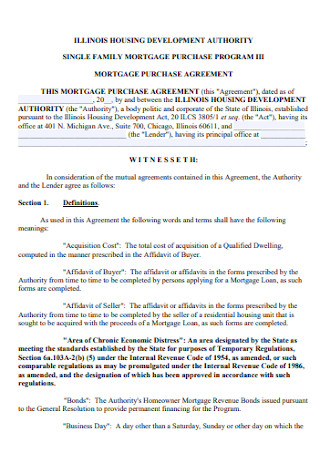
Mortgage Purchase Agreement
download now -

Mortgage Loan Contribution Agreement
download now -
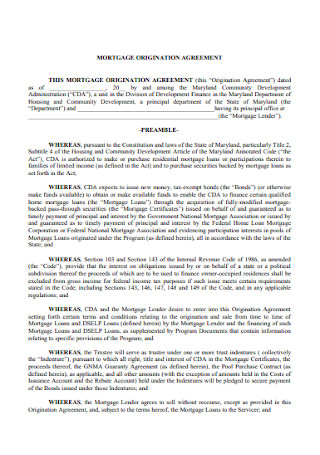
Mortgage Organization Agreement
download now -
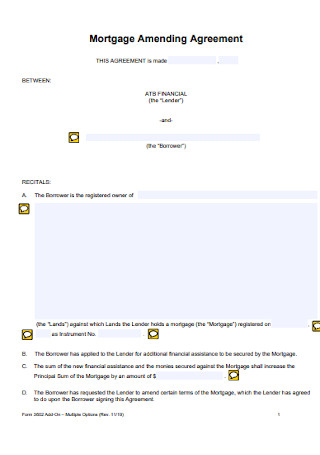
Mortgage Amending Agreement
download now -
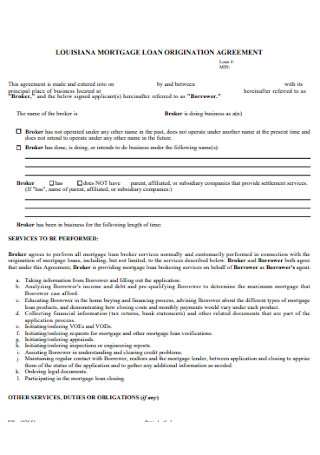
Mortgage Loan Organization Agreement
download now -
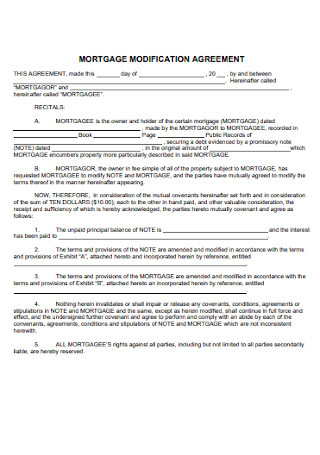
Mortgage Modification Agreement
download now -
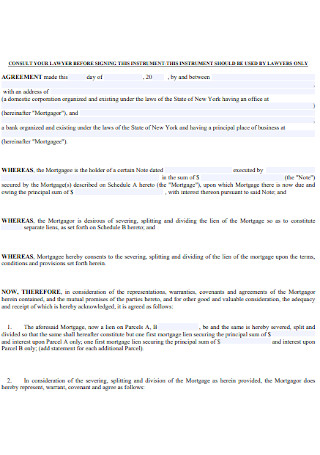
Mortgage Splitter Agreement
download now -
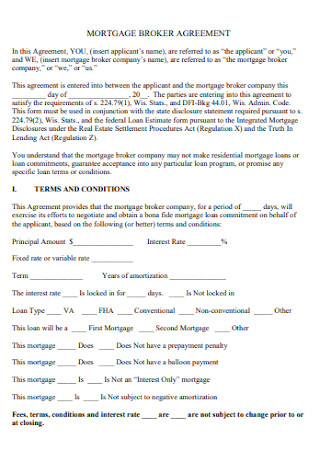
Mortgage Broker Agreement
download now -

Mortgage Organization Master Agreement
download now -
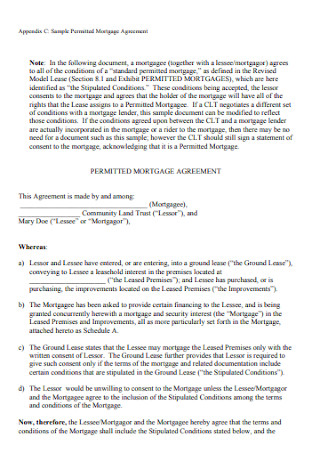
Sample Permitted Mortgage Agreement
download now -
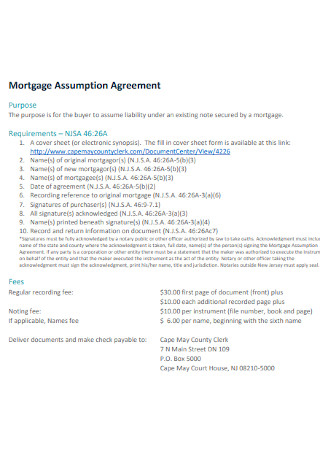
Mortgage Assumption Agreement
download now -
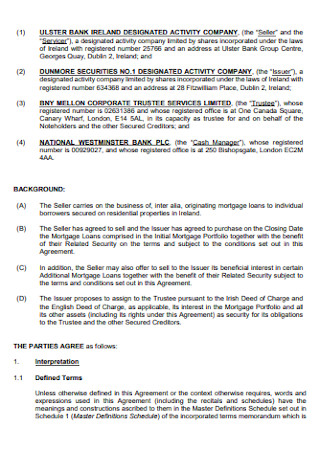
Mortgage Sale Agreement
download now -

Mortgage Acquisition Agreement
download now -

Mortgage Loan Agreement Template
download now -
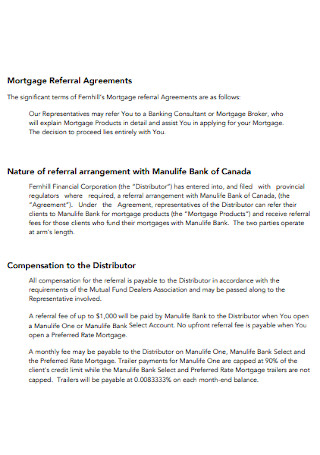
Mortgage Referral Agreement
download now -
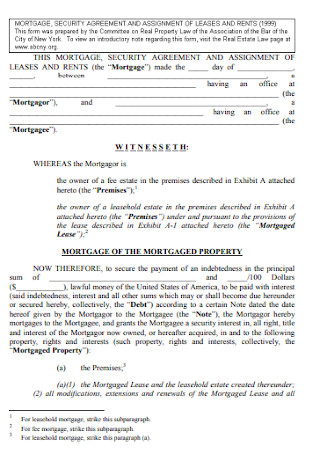
Mortgage Security Agreement
download now -
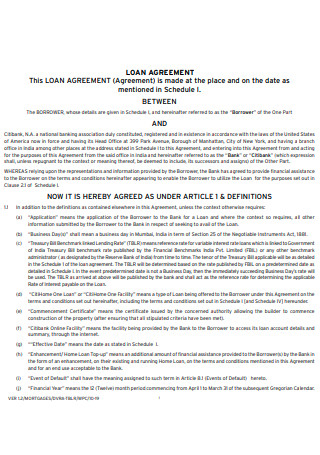
Mortgage Loan Agreement
download now -

Mortgage Purchase Agreement
download now -
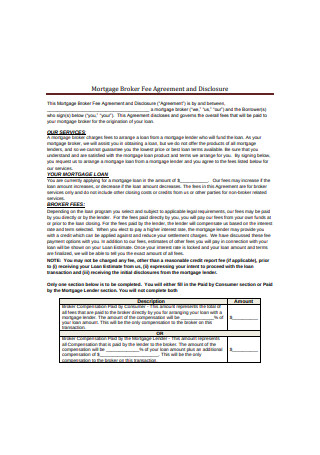
Sample Mortgage Fee Agreement
download now -
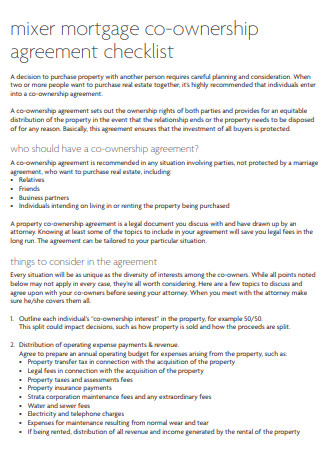
Mortgage Ownership Agreement Checklist
download now -
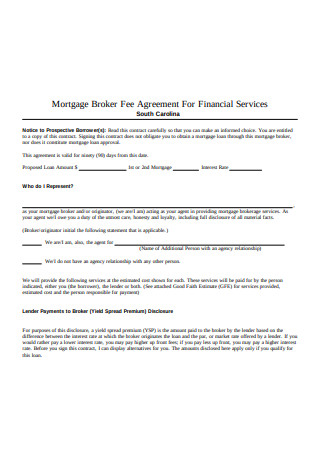
Mortgage Broker Fee Agreement
download now -

Mortgage Extension Agreement
download now
Fortunately, aspiring homeowners are offered the opportunity to be lent the funds to make the impossible possible and this process of acquiring a mortgage usually begins by setting terms and conditions detailed in a Mortgage Agreement. This article then will be discussing what a mortgage agreement is, the process one must pay closer attention to and understand in depth, and the main distinction or the lack thereof between a Mortgage Agreement from a Mortgage Contract in which the latter, in a separate article, defines the most common concepts one would usually encounter during discussions revolving mortgage. While it is not imperative, we would suggest the article on Mortgage Contract be read beforehand to have a better grasp about these terms and pave the way for a better understanding about mortgage in general. Now, without further ado, learn more about what a Mortgage Agreement is and with 21+ of our Mortgage Agreements, draft one of your own now!
What is a Mortgage Agreement?
A Mortgage Agreement is the document that establishes the terms and conditions a mortgagee and a mortgagor have consented to be bound upon. While most agreements are informal and have legal force, a Mortgage Agreement could effectively function or at least set the grounds for your contract that once signed will legally bind the parties to adhere to the arrangement. This then would require the lender to offer the borrower’s request for a loan to purchase real estate and finally live their dream of being a homeowner.
Agreement vs Contract
The terms and agreement and contract are often used interchangeably and understandably so because there is only a minimal distinction between the two but for the case between a Mortgage Agreement and a Mortgage Contract, as mentioned, a Mortgage Agreement sets the terms of the contract and can function as the contract itself once agreed by both parties and signed upon. However, this is not the same for most cases and we figure it should pay to at least distinguish the two for legalities sake and so as the lines between the terms agreement and contract don’t get muddied further.
An agreement is simply an understanding that the parties involved have reached upon. It is often informal and unwritten meaning it can also be exchanged verbally and does not require adherence from both parties as it generally does not legally bind them to. On the other hand, a contract is a formal and binding agreement that legally enforces the parties involved to adhere to the terms and conditions agreed upon in the agreement. We could then say that all contracts are agreements but not all agreements are contracts.
The Mortgage Loan Process
Like most things, to purchase a home requires a process that can pose to be a challenging experience if you are unfamiliar with the process of applying for a mortgage loan. There are steps one must go through to acquire the requested amount of money before a homeowner can legitimately be referred to as such. This section of the article will be putting together the phases involved when you apply for a mortgage loan so as you get the general gist of what you will be going through and what you can prepare for to get the best mortgage deals with the lowest interest rates.
1. Mortgage Pre-Qualification
For the first stage of the mortgage process, a mortgage lender, usually a bank, is required to run through your credit to determine that you meet the universal guidelines for applying for a mortgage loan. In this stage, the evaluation will not be as thorough in the assessment of your financial reports because it does not usually involve an extensive read of your asset list and income verification but they should be able to provide you with a rough estimate of how much money you can afford to borrow. Hence, you must move to the second phase of the process, the Pre-Approval which is advisable for you to proceed immediately rather than having to go through the Pre-Qualification process especially if you are serious about homeownership and purchasing your own property.
2. Mortgage Pre-Approval
This phase of the process involves a thorough evaluation of income and expenses statements, asset lists, credit history, past transactions, verify your employment history and your credit score. It basically assesses your financial report to determine whether or not you are eligible for the loan you wish to receive, which mortgage deal best suits your financial status and ultimately, if you have the financial capacity of repaying the monthly installments throughout the whole period of the amortized mortgage. As mentioned, from your financial report, a credit score will be extracted and would serve as a basis to identify a mortgage deal corresponding to your personal financial status or if you even are qualified for one. The credit score ranges from 0-999 and are divided as follows:
- 961-999 (Excellent) – This means that you are more than qualified to afford the best mortgage deals with lower interest rates.
- 881-960 (Good) – A credit score in this range means you are still eligible for most but not all of the ideal mortgage deals.
- 721-880 (Fair) – This means that you are still approved for mortgage deals with a sound interest rate that is appropriate to your financial status and repaying capacity.
- 561-720 (Poor) – While you are still eligible for mortgage deals, it will be charged with higher interest rates.
- 0-560 (Very Poor) – A credit score within this range is ultimately denied a mortgage deal that might not even get you one in other lending banks or if you could, it is usually charged with high interest rates that you may struggle even more to repay.
3. House Hunting
Once you are approved, you may proceed with selecting your new home. While this would be the most fun part of the whole process and you basically have a home checklists prepared, keep in mind your finances and employ a more practical approach in your shopping for a new home. Refer to your credit score as often as possible to be reminded of the deal you are approved for. Live in what you can afford. In this stage, you would have to link up with your trusted real estate agent who you are assured knows how to structure an offer that is in your best interest and will include contingencies or conditions that must be satisfied before closing in on the deal. Once an offer is made, you are required to submit an earnest money deposit typically 1-2% of the sale price as proof of your commitment to purchase a home. In the context of mortgages, the earnest money deposit is managed by a third-party escrow company agreed upon in the purchase contract. This will be credited towards the home owner’s down payment and/or closing costs that will be refunded to the buyer if the two are not present.
4. Mortgage Loan Application
After an offer is accepted, you’ve been pre-approved for a loan and now that your home is under contract meaning the contract is yet to close but only until the contingencies are met, you can move to finalize the process of your mortgage loan application. In this stage, you will be asked to fill out the Fannie Mae Form 1003 otherwise known as the Uniform Residential Loan application (URLA) that most lenders use as the standard form. It mostly asks for additional information about you, the property to be purchased and the type of loan used by the borrower. According to Bankrate, there are 5 Common Mortgage Types and 3 other more and these will be listed below:
I. Conventional Mortgages
This type of mortgage is not insured by the federal government. A conventional mortgage is able to meet the requirements set by government-sponsored agencies, Fannie Mae and Freddie Mac or the limits established by the Federal Housing Finance Agency. While the most popular option for a mortgage loan, it does require a credit score of 620 and above and a debt-to-income ratio of 45%-50%.
II. Jumbo Mortgages
This type of a mortgage loan is conventional however they have non-conforming loan limits exceeding the limits set by the Federal Housing Finance Agency (FHFA). Most homebuyers who opt for this loan are probably those who want to purchase a luxurious home which means that for a lender to approve them of the loan, they must be able to deposit a down payment of at least 10-20% with a credit score of 700 and above although some lenders would accept buyers with a minimum credit score of 660. They must also have a debt-to-income ratio not higher than 45%.
III. Government-insured Mortgages
While the US Government itself does not qualify as a mortgage lender, they do play a key role in ensuring that more Americans are able to secure a home for themselves and their families. This type of loan however, is insured by three agencies within the U.S federal government namely: Federal Housing Administration (FHA loans), the U.S. Department of Agriculture (USDA loans), and the U.S. Department of Veterans Affairs (VA loans).
FHA Loans
These are loans insured by the Federal Housing Administration to homebuyers who are unable to pay up front a large amount of the required down payment saved up or those that have encountered credit issues in the past. First time home buyers whose credit score is 580 and above get to enjoy a minimum down payment of 3.5% of the home’s sale price.
USDA loans
Insured by U.S. Department of Agriculture, this loan aids low- to moderate income borrowers who want to buy homes in the rural areas that are USDA approved. This is also beneficial to the eligible USDA borrowers as they are not required to deposit a down payment.
VA loans
A VA loan is exclusive for active-duty service members. Veterans and their families or an eligible spouse or a U.S citizen who served in World War 2 with America’s allies. They do not require down payments or at least a large one and are able to provide you a home even when you are not approved for a conventional loan.
IV. Fixed-Rate Mortgages
In a fixed-rate mortgage, interest rate is stable throughout the period where you have to pay the installments regardless of the fluctuations of interest rates in the general market. This stability will ensure you that monthly payments are the same and you won’t have to be expecting the unexpected.
V. Adjustable-Rate Mortgages (ARM)
Unlike a Fixed Rate Mortgage, an Adjustable Rate Mortgage is the type of loan whose interest rate is fixed for a certain period of time but will then face fluctuations depending on market conditions meaning monthly payments can rise and fall.
VI. Construction loans
Construction loans also referred to as Self-Build Loans are loans that individuals who want to build a home can choose as their mortgage loan. This will be a separate mortgage loan specifically used for the construction of your home or a real estate project and a separate mortgage to pay off everything. Because it can be quite risky for the lenders, they will require a higher down payment with higher interest rates and ensure that the borrower can in fact, afford it.
VII. Interest-only Mortgage
This kind of loan is as straightforward as it can get. Borrowers make interest-only payments for a certain period of time usually between five to seven years. It will then get tricky once this period is up as your monthly payment would start to increase double and even triple what you used to pay for during the introductory period as you will now be paying for the principal amount along with its interest rate however, with a sound budget plan that strictly implements good spending habits and monitors the household’s budget worksheets you should be able to afford this type of mortgage if you optimize the introductory period to save up just in time before your monthly payment balloons.
VIII. Balloon Mortgages
A balloon mortgage is a type of loan that requires a large payment towards the end of the loan period. Like an Interest-Only Mortgage, it has an introductory period of five to seven years with low or interest-only monthly payments. However, because it does require you to pay the outstanding balance at the end of the term, you would have to be prepared for when the monthly payments drastically increase.
5. Mortgage Processing
Once your application is settled, it will be moved to the processing phase of the Mortgage Process. This is where your application is further approved so the mortgagee would require another set of documents of you and the home or real estate to be purchased which commonly include bank statements, tax records, employment letters, purchase agreement and more depending on the guidelines of the lending financial institution.
6. Mortgage Underwriting
Facilitated by an underwriter, they would have to review and carefully assess the previous loan documentations you have provided to ensure that it meets lending requirements and guidelines. This is the nerve-wracking phase in the entire process as the decision all falls on the underwriter who can wield the power to reject or approve your application for finalization and it would be very unfortunate to have your hard work down the drain. In this phase, your financial capacity to adhere to the lending and mortgage payment terms will be thoroughly evaluated as well as the analysis of the risks associated with your loan.
7. Mortgage Loan Approval and Closing
Finally, once your final underwriting is approved and your application is labeled ‘Clear to Close’ you should be expecting for your loan to be funded. The closing phase of the process involves a few more steps and one of which is the submission of a Closing Disclosure to the mortgagor which is a form spanning up to five pages in length outlining the final details of the mortgage loan. The borrower will be given three days before completing the transaction and before the loan officially closes and in this three day window, the borrower is responsible to review the document and ask any questions regarding the form.
FAQs
What is a Mortgage Agreement?
A Mortgage Agreement establishes the terms and conditions a mortgagee and a mortgagor consent to where the mortgagee, upon thorough review of the mortgagor’s loan application, will grant them their requested fund and in return the mortgagor is legally bound to make the monthly payments.
What are the 3 types of Mortgages?
Referring to what was detailed in the articled, there are five types of Mortgages with an additional three that are not as common as the five:
- Conventional Mortgages
- Jumbo Mortgages
- Government-Insured Mortgages (FHA Loans, USDA Loans, VA Loans)
- Fixed-Rate Mortgages
- Adjustable-Rate Mortgages
- Construction Loans
- Interest-Only Mortgages
- Balloon Mortgages
Which type of mortgage is the best?
A popular mortgage loan of choice is the Fixed-Rate Mortgage due to its consistency in the payments that you can easily set aside money for. Because its interest rates are not affected by what goes on in the market, you are also assured that payments won’t have to increase.
